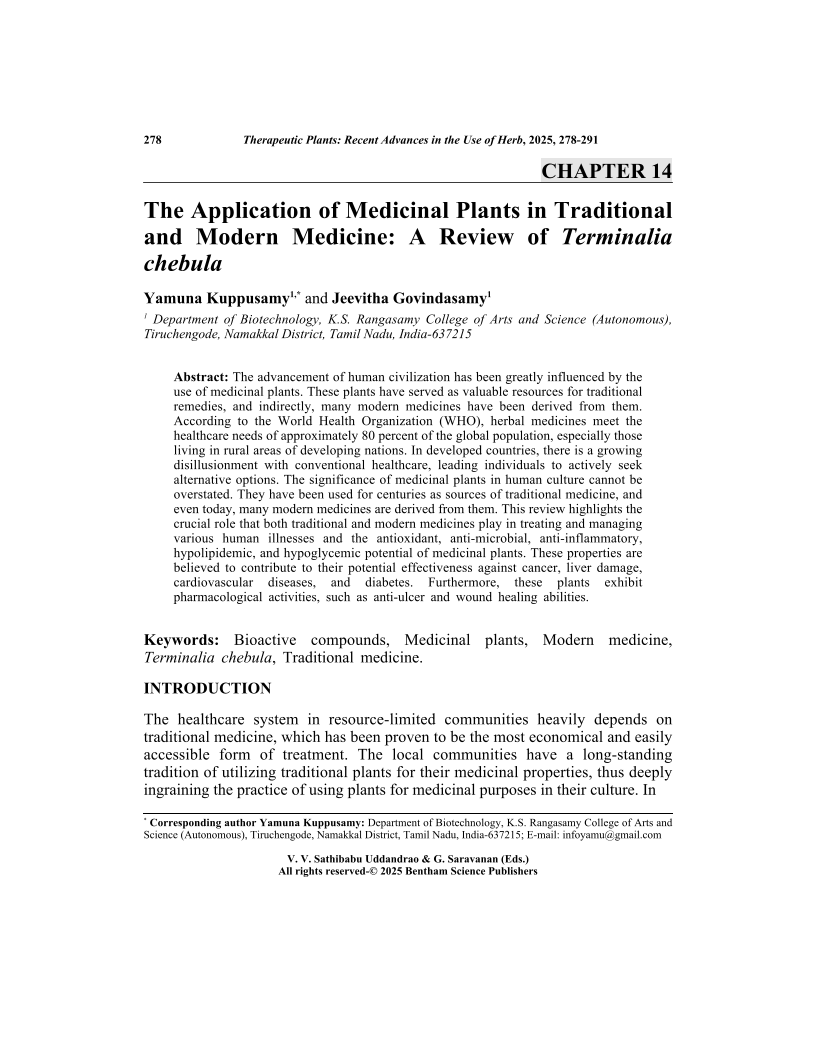The Application of Medicinal Plants in Traditional and Modern Medicine: A Review of Terminalia chebula

- Authors: Yamuna Kuppusamy1, Jeevitha Govindasamy2
-
View Affiliations Hide Affiliations1 Department of Biotechnology, K.S. Rangasamy College of Arts and Science (Autonomous), Tiruchengode, Namakkal District, Tamil Nadu, India 637215 2 Department of Biotechnology, K.S. Rangasamy College of Arts and Science (Autonomous), Tiruchengode, Namakkal District, Tamil Nadu, India-637215
- Source: Therapeutic Plants: Recent Advances in the Use of Herbs as Alternative Medications , pp 278-291
- Publication Date: May 2025
- Language: English
The Application of Medicinal Plants in Traditional and Modern Medicine: A Review of Terminalia chebula, Page 1 of 1
< Previous page | Next page > /docserver/preview/fulltext/9789815322910/chapter-14-1.gif
The advancement of human civilization has been greatly influenced by the use of medicinal plants. These plants have served as valuable resources for traditional remedies, and indirectly, many modern medicines have been derived from them. According to the World Health Organization (WHO), herbal medicines meet the healthcare needs of approximately 80 percent of the global population, especially those living in rural areas of developing nations. In developed countries, there is a growing disillusionment with conventional healthcare, leading individuals to actively seek alternative options. The significance of medicinal plants in human culture cannot be overstated. They have been used for centuries as sources of traditional medicine, and even today, many modern medicines are derived from them. This review highlights the crucial role that both traditional and modern medicines play in treating and managing various human illnesses and the antioxidant, anti-microbial, anti-inflammatory, hypolipidemic, and hypoglycemic potential of medicinal plants. These properties are believed to contribute to their potential effectiveness against cancer, liver damage, cardiovascular diseases, and diabetes. Furthermore, these plants exhibit pharmacological activities, such as anti-ulcer and wound healing abilities.
-
From This Site
/content/books/9789815322910.chapter-14dcterms_subject,pub_keyword-contentType:Journal -contentType:Figure -contentType:Table -contentType:SupplementaryData105

